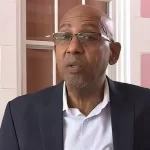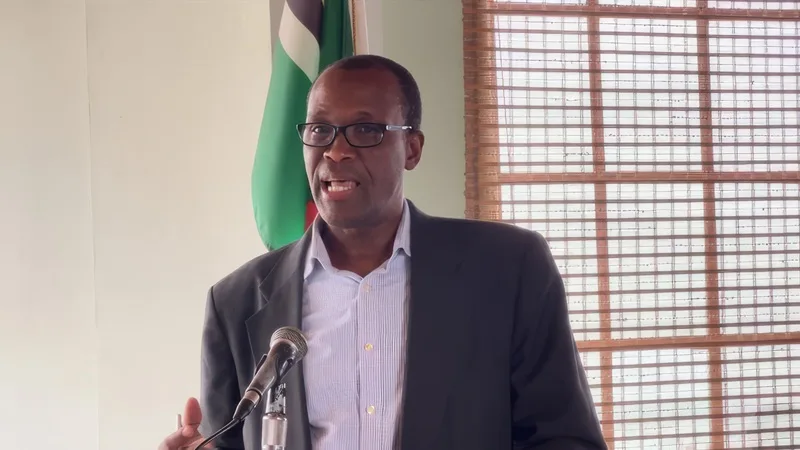Lennox Honychurch

Dr. Lennox Honychurch, born on December 27, 1952, in Portsmouth, is a celebrated historian, anthropologist, author, and artist. Growing up in Saint John Parish, particularly in the historic coastal town of Portsmouth, gave him early exposure to Dominica’s colonial relics, bustling market life, and natural landscapes, elements that would influence his future storytelling. His family’s heritage stretches back to the 1790s, tying him to the colonial Caribbean era and making his later research deeply personal.
He is the son of Edward “Ted” Honychurch and Penny Honychurch, with deep family roots in the village of Giraudel. Raised amid the natural beauty in the north of Dominica and steeped in oral traditions, young Lennox developed a passion for preserving cultural identity through history, art, and public service.
Lennox Honychurch’s Academic Journey and International Recognition
Driven by a thirst for knowledge, Dr. Honychurch’s academic rise defied convention, leading him to one of the world’s most prestigious universities through scholarships and research.
Though he did not initially pursue a conventional university path, Honychurch’s reputation as a self-taught historian earned him both a Chevening Scholarship and a Commonwealth Scholarship. He completed an MPhil and PhD in Anthropology and Museology at Oxford University, becoming a leading authority on Caribbean heritage, Indigenous cultures, and Maroon resistance movements.
His academic work has informed numerous regional initiatives and inspired cultural preservation projects in partnership with various Caribbean states.
A Prolific Writing Career Rooted in Dominica’s Past
Dr. Honychurch’s literary legacy is vast, spanning educational texts, national histories, cultural explorations, and photographic works, all crafted to preserve and promote Caribbean identity.
Books That Shaped Regional Consciousness
Honychurch’s extensive body of work continues to influence education and culture across the Caribbean. His publications are frequently referenced in discussions on Dominica’s Maroon history, Kalinago culture, and colonial resistance. Many of these titles appear in educational institutions throughout the region:
- The Dominica Story: A History of the Island (1975) – A foundational text, now in multiple editions, detailing the island’s full historical narrative.
- The Caribbean People (1980s) – A textbook trilogy used throughout the Caribbean in schools and teacher education.
- Our Island Culture (1982) – A cultural companion highlighting Dominican customs, festivals, and daily traditions.
- The Cabrits and Prince Rupert Bay (1983) – Focused on one of Dominica’s key historical landmarks.
- Caribbean Landmarks: Historic Events and Sites (1984) – A cross-regional publication illuminating key Caribbean historical places.
- Dominica: Isle of Adventure (1991) – A guidebook blending adventure tourism with historical awareness.
- Caribbean Camera: A Journey Through the Islands (1998) – A visual celebration of Caribbean island life.
- In the Forests of Freedom: The Fighting Maroons of Dominica (2017) – A narrative of the Maroon resistance that links to events such as those chronicled in The Maroons of Dominica 1764–1818 – Resistance, Rebellion, and Freedom from Slavery.
- Resistance, Refuge, and Revival: The Indigenous Kalinagos of Dominica (2024) – A landmark study on Kalinago history, based on his PhD thesis.
These works have preserved Dominica’s heritage while situating it within a broader Caribbean context, enabling Dominica to claim its rightful place in postcolonial narratives.
Radio Journalism and Public Engagement
Honychurch’s early career began at DBS Radio, where he created educational radio segments that explored Dominican heritage. These recordings, based on oral histories and historical records, were later compiled into The Dominica Story, bridging scholarly history with public education.
Artistic Contributions and Cultural Preservation
His artistic talents and curatorial vision have left an indelible mark on Dominica’s public spaces and national identity, especially through museums, murals, and preservation projects.
Murals and Public Art
Dr. Honychurch is also a respected visual artist. His murals, many painted in churches, schools, and the Dominica Museum, depict Kalinago life, African traditions, and scenes from The Great Hurricane of 1780 in Dominica. These artworks visually preserve events and figures that shaped Dominica.
Museology and Regional Projects
He led the design and development of the Dominica Museum in Roseau, located adjacent to the Old Market Plaza and near the Roseau Cruise Ship Berth. His museology expertise extended regionally to Betty’s Hope in Antigua, Fort Frederick in Grenada, and advisory roles in heritage policy.
These efforts reflect his mission to transform historical education into a tangible and immersive experience.
Politics and National Development
While he never remained in active politics, Dr. Honychurch’s early service in the government of Dominica set the stage for his lifelong impact on national cultural direction.
Public Office and Press Secretary Role
From 1975 to 1979, Honychurch served as a Senator in the House of Assembly under the Dominica Freedom Party. Following the 1980 elections, he became Press Secretary to the Prime Minister, supporting the communications arm of the newly independent government.
Although his time in elected office was brief, it laid the groundwork for his future influence in national policy and cultural diplomacy.
Awards, Honors, and Recognition
His scholarly work, public advocacy, and artistic talent have earned him numerous accolades across the Caribbean and internationally.
- Golden Drum Award (1994)
- Anthony N. Sabga Caribbean Award for Excellence (2011)
- Dominica Award of Honour (2018)
These honors affirm his role as one of the most impactful cultural figures in Caribbean history and national development.
Personal Life and Ongoing Legacy
Dr. Honychurch continues to live in Dominica, maintaining close ties to the communities of Portsmouth, Roseau, and the historic Cabrits National Park area.
He is currently involved in sustainable heritage projects that intersect with eco-tourism, Kalinago empowerment, and the revitalisation of historical sites.
Through public speaking, fieldwork, and creative writing, he continues to inspire educators, students, historians, and artists across the Caribbean and the diaspora.




